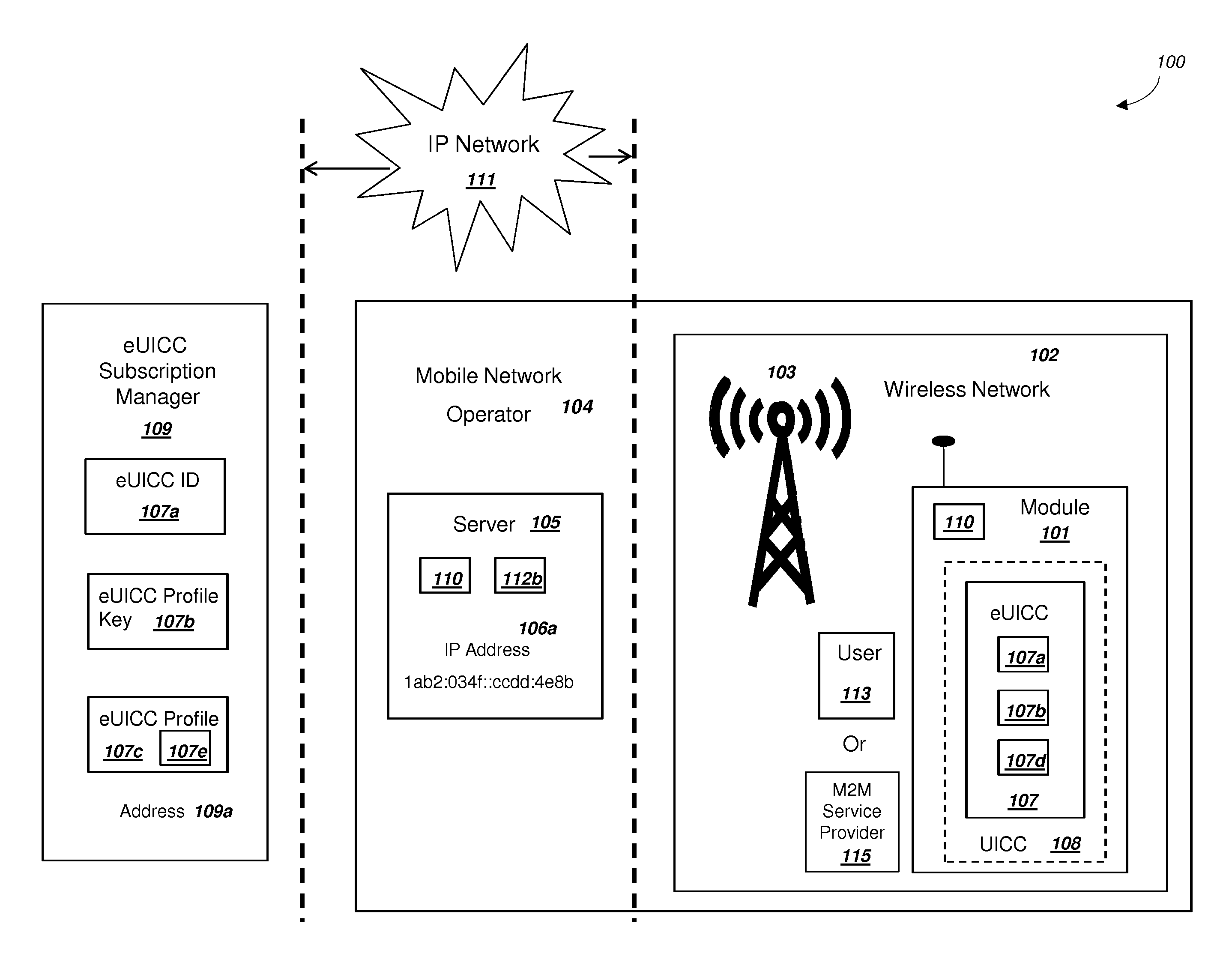Network Supporting Two-Factor Authentication for Modules with Embedded Universal Integrated Circuit Cards
a technology of integrated circuits and modules, applied in the field of communication networks, can solve the problems of increasing creating a significant new class of problems that need to be solved, and reducing so as to reduce the cost of physical installation. , the effect of increasing the flexibility of the system
- Summary
- Abstract
- Description
- Claims
- Application Information
AI Technical Summary
Benefits of technology
Problems solved by technology
Method used
Image
Examples
Embodiment Construction
[0047]FIG. 1a
[0048]FIG. 1a is a graphical illustration of an exemplary system that includes a module and a mobile network operator, in accordance with exemplary embodiments. The system 100 includes a module 101 operating within a wireless network 102. System 100 can also include a mobile network operator 104, an IP Network 111, and an eUICC subscription manager 109. Mobile network operator (MNO) 104 can include a server 105. For embodiments where the MNO 104 uses 4G LTE and LTE Advanced networks, server 105 could comprise a home subscriber server (HSS) and / or a mobility management entity (MME). Server 105 could be a server with related functionality as a HSS or MME for a MNO 104 that uses different wireless network standards than those based on 4G LTE. Although not illustrated in FIG. 1a, a MNO 104 may also include one or more servers 105, such that a first server 105 could function as an HSS in 4G LTE and LTE Advanced networks and a second server 105 could function as a MME in 4G ...
PUM
 Login to View More
Login to View More Abstract
Description
Claims
Application Information
 Login to View More
Login to View More - R&D
- Intellectual Property
- Life Sciences
- Materials
- Tech Scout
- Unparalleled Data Quality
- Higher Quality Content
- 60% Fewer Hallucinations
Browse by: Latest US Patents, China's latest patents, Technical Efficacy Thesaurus, Application Domain, Technology Topic, Popular Technical Reports.
© 2025 PatSnap. All rights reserved.Legal|Privacy policy|Modern Slavery Act Transparency Statement|Sitemap|About US| Contact US: help@patsnap.com



